
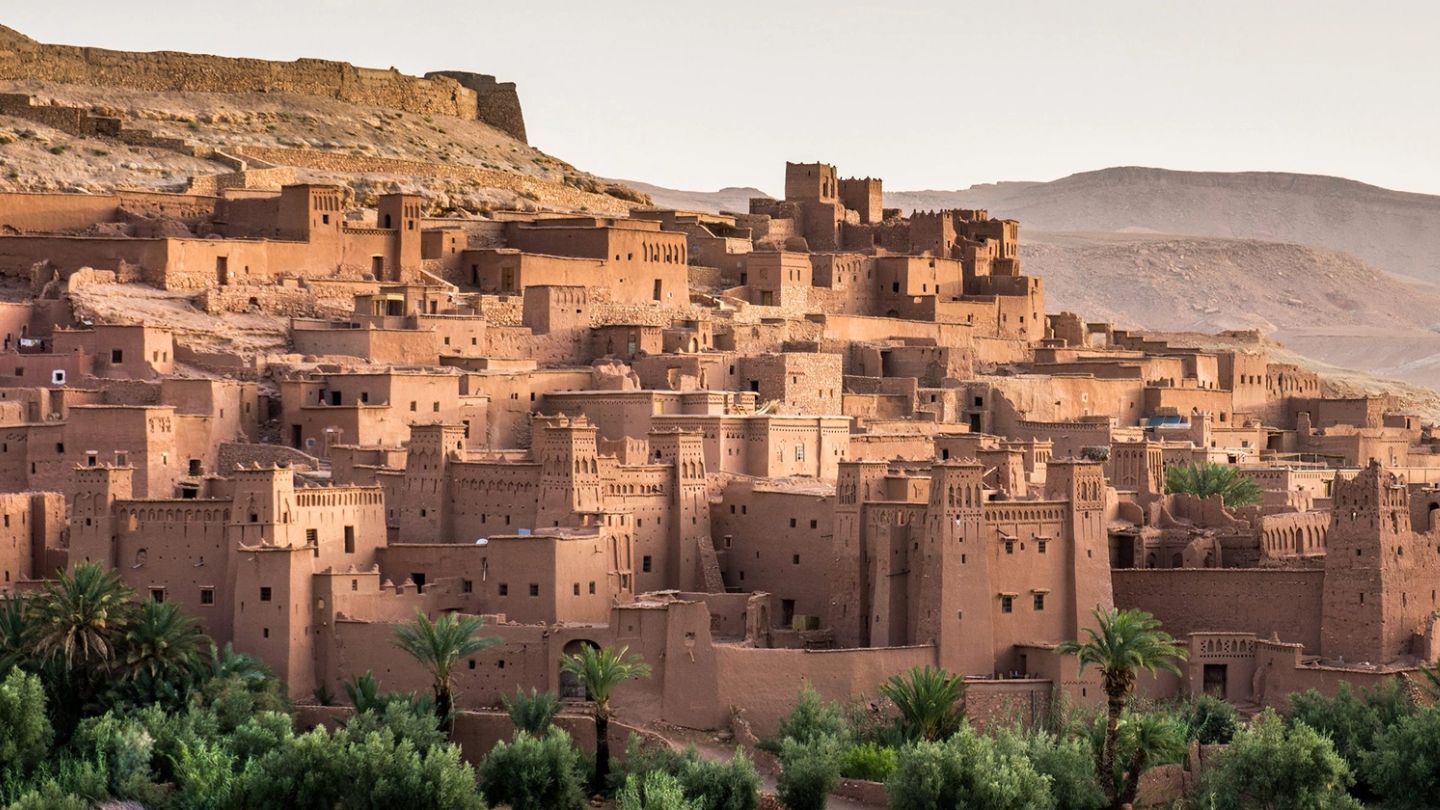
Words: Jonathan Wells
It would appear that Fatima has taken a shine to me — not least because of her glinting gold tooth. But, smile aside, it’s probably not meant to be: Fatima is three, perhaps four, times my age, speaks exclusively in the lyrical language of the Berber people, and lives high in the grand, but remote, Atlas Mountains.
Nevertheless, we’re sitting down to dinner together with Fatima’s son, his wife and their children in the family’s modest home. Nestled snugly in the African mountain range, the house is small, the village secluded and the food simple. Above us, snow dusts the peaks; below, the foothills burn with Saharan heat. I am as far from luxury as you can get — and, in being here, I am testing out the latest trend in luxury travel.
From the favelas of Rio to the railway slums of New Delhi, there is an increasing desire to experience destinations in their true light: to pull back the curtain of conventional tourism and delve in — however stark or starling it may be. And while this has raised cries of voyeurism and exploitation from some quarters, many travellers are now gladly spending five-star money on exploring the poorer parts of the world.
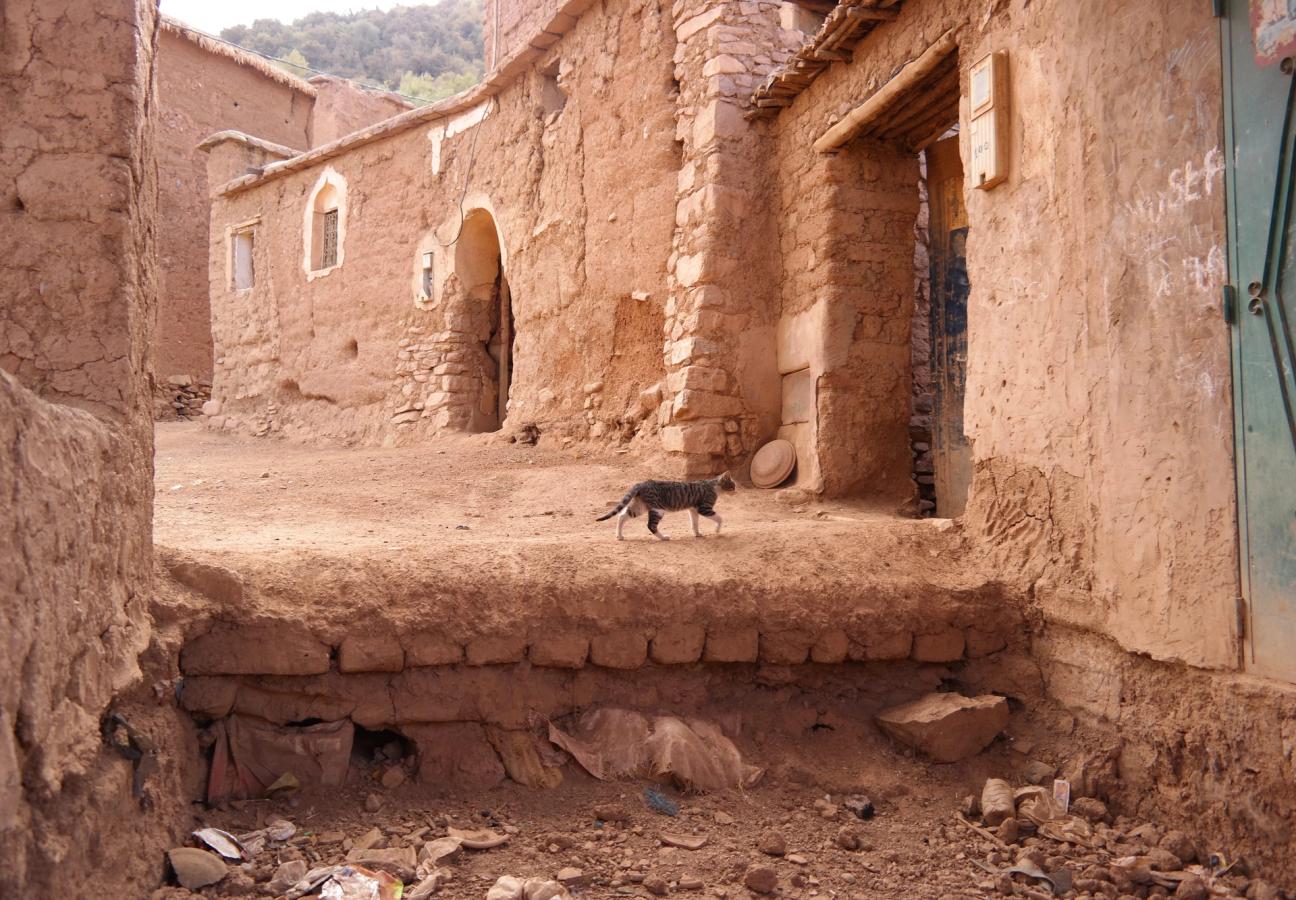
There is no better destination than Morocco to investigate this emerging industry. Itself a country of contrasts — from the conflicting climates to the linguistic farrago of French and Arabic — this North African nation is fast becoming a hotspot for the travelling elite. And so, several days before meeting Fatima’s family, I landed in Marrakesh.
As a warm wind beat against the car’s window, the plucking of a Moroccan stringed instrument crackled out of the radio. I had just touched down and, from behind the wheel — hypnotically humming along to the tune — my driver Khalid explained why Moroccans embrace all types of tourism.
“We like it,” he laughed, “and the benefits are clear. More money for Morocco, from golf courses and new hotel complexes to refurbished luxury resorts like the Fairmont Royal Palm.”
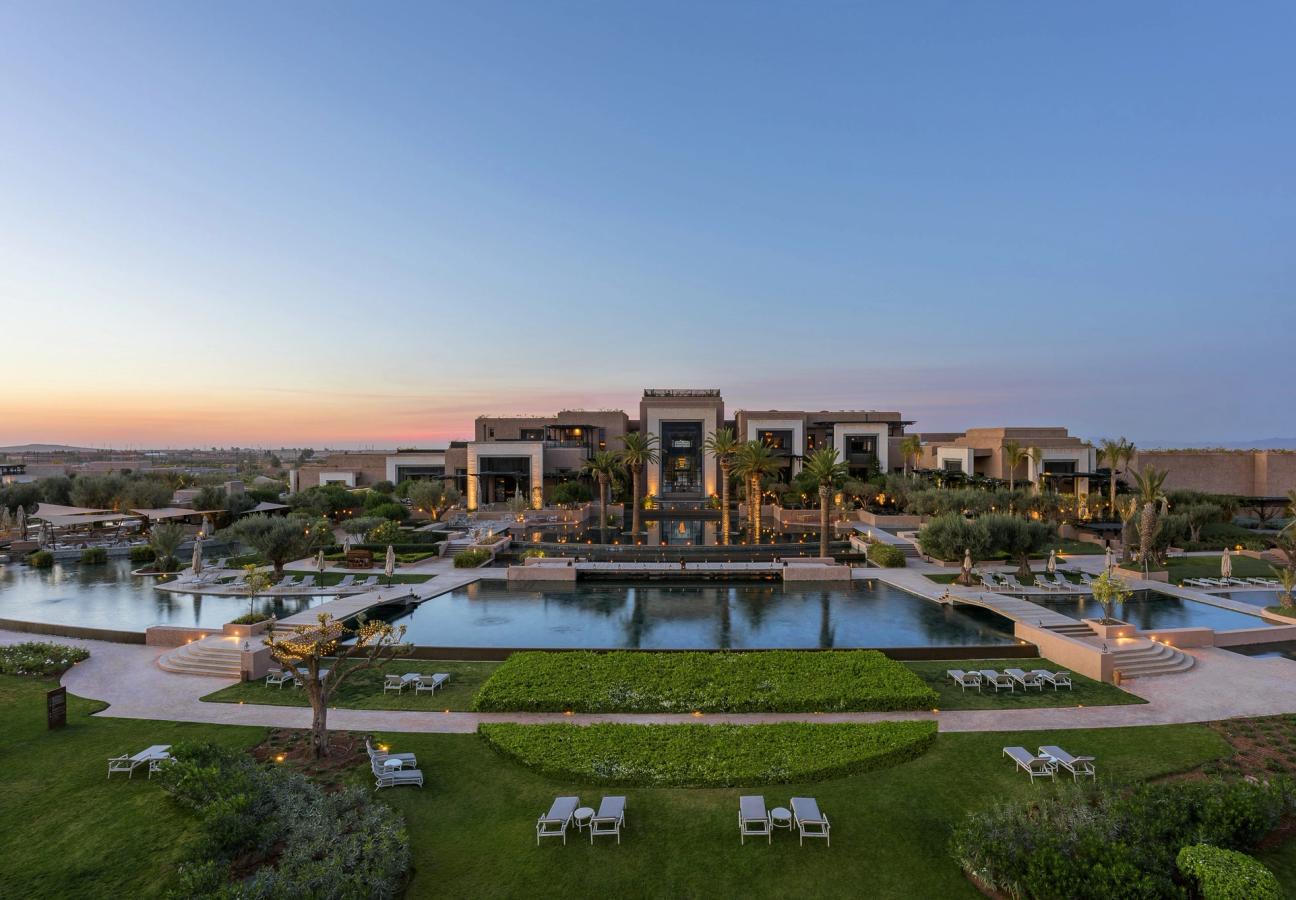
My only lapse into luxury before I made for the mountains, the Fairmont Royal Palm Marrakesh may represent the higher end of Moroccan tourism, but with its classic design and respect for local ideals, it exists as a typical example of old traditions and new money sitting comfortably side-by-side.
As Khalid and I drove by buildings silhouetted against an inky sky, he punctuated his humming with praise for Morocco’s diverse approach to tourism. Opening the eyes of visitors whilst lining the pockets of locals is mutually beneficial, he told me, and the nation has seen an influx of investment over recent years. Just over a decade ago, Richard Branson opened a resort in the Atlas Mountains; Fairmont only acquired the Royal Palm Marrakesh last year.
And, refreshingly, these high-end hotels don’t just function as insular resorts — the staff at the Royal Palm recommended I visit the Atlas Mountains’ traditional Berber villages as soon as I checked in.
Yet, as we skirted the base of the mountains below a severe crescent moon, Khalid acknowledged the difficulties a nation encounters when it opens its less luxurious doors to the world. “It can be a shock,” he nodded of the culture clash. “Especially here. But, as with so many things in Morocco, our acquired tastes are often our best.”
Sitting opposite Fatima’s family, the distant driver’s words ring true. On a tray before me is a bowl of loose leaf green tea, several sprigs of mint, a kettle of boiling water and enough sugar to sweeten the Strait of Gibraltar. These are the makings of Moroccan mint tea, a drink served in the Atlas Mountains with equal degrees of frequency and ceremony.
"Echoes of prayer floated up the valley as ravens swooped about the burnt-orange hills..."
Under Fatima’s watchful eye, I spoon tea into the pot, before adding the boiling water. I break and bother the mint sprigs to release flavour, drop them into the pot, and then add an ungodly amount of sugar — smashed from a 5lb cone with a rock.
I serve Fatima first — another golden smile won — followed by the rest of the family, using the flamboyant, local technique of pouring from a great height. It’s a precarious move, given that the glasses are rather small, but one I’ve mastered over recent days. For, the first time I performed this particular tea ceremony — and experienced acute sugar shock — I was sitting on a tasselled cushion on the rooftop of a Berber inn in the foothills of the Imlil Valley.
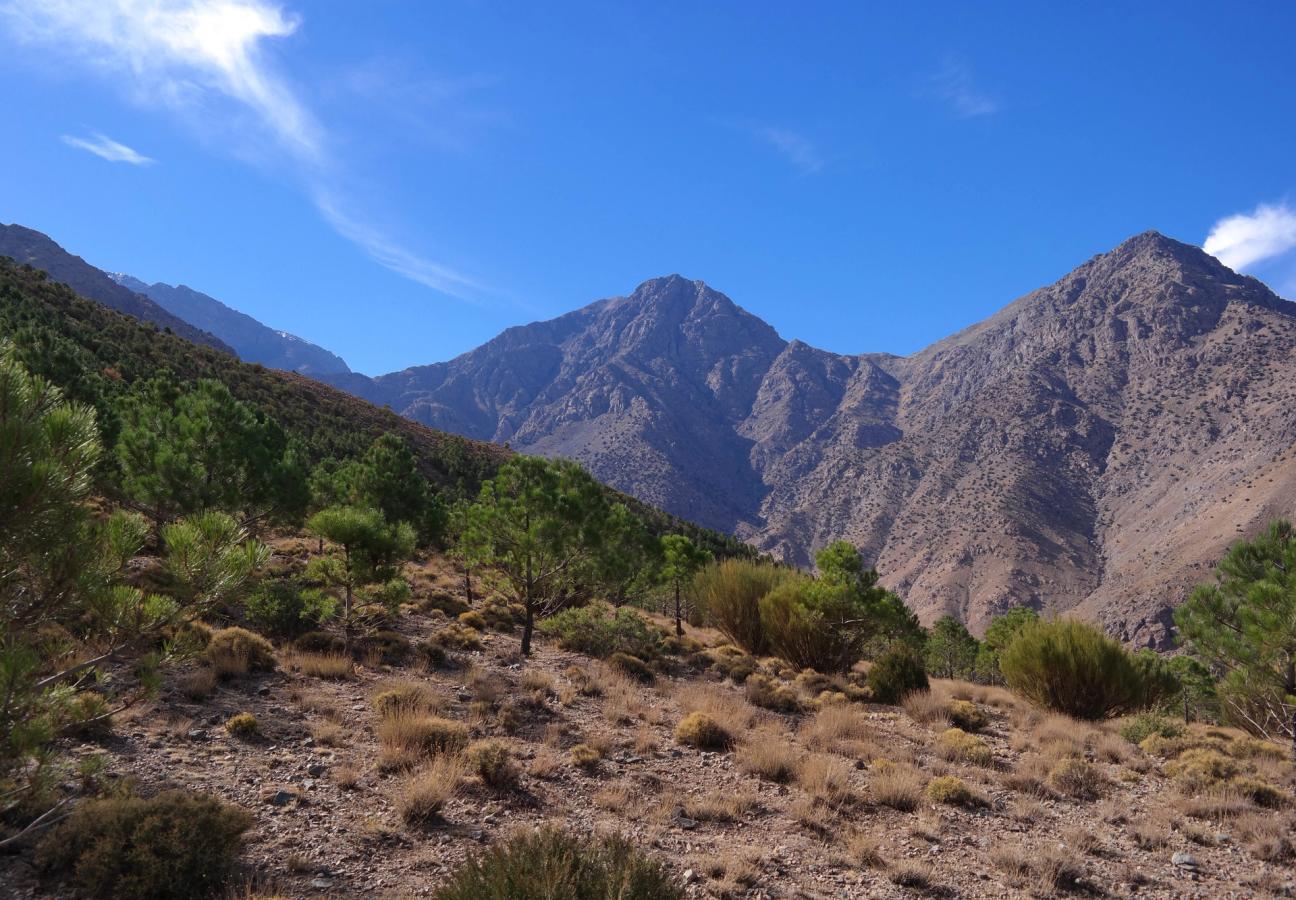
Considerably closer to sea level than Fatima’s village, echoes of prayer floated up the valley as ravens swooped about the burnt-orange hills. Behind me, the valley settled into the desert, an early-winter forest of weathered cherry and walnut trees that threw a reddish carpet across the hills. Beyond this burst of colour, endless olive groves reached back across the desert towards the medinas of Marrakesh.
But, as I swam my spoon in a bowl of vivid vegetable soup, my eyes were drawn not to the warm foothills behind me, but rather to the snow-capped peaks that lay ahead. In these headier climes, carved into the steeper slopes, farmers in fezzes tended the verdant steps of crop terraces, replete with barley, turnips and chilli bound for local bowls like mine.
The food of the Berber people, traditional and hearty, is enriched by the deep, red clay of the Atlas Mountains, which imbues ingredients with a great intensity of flavour. And, there in the Imlil Valley, I discovered perhaps the heartiest mainstay of the Moroccan table: the tagine. But although that dish — of figs, goat meat and walnuts — was the first terracotta lid I lifted in the Atlas Mountains, it was far from the last.
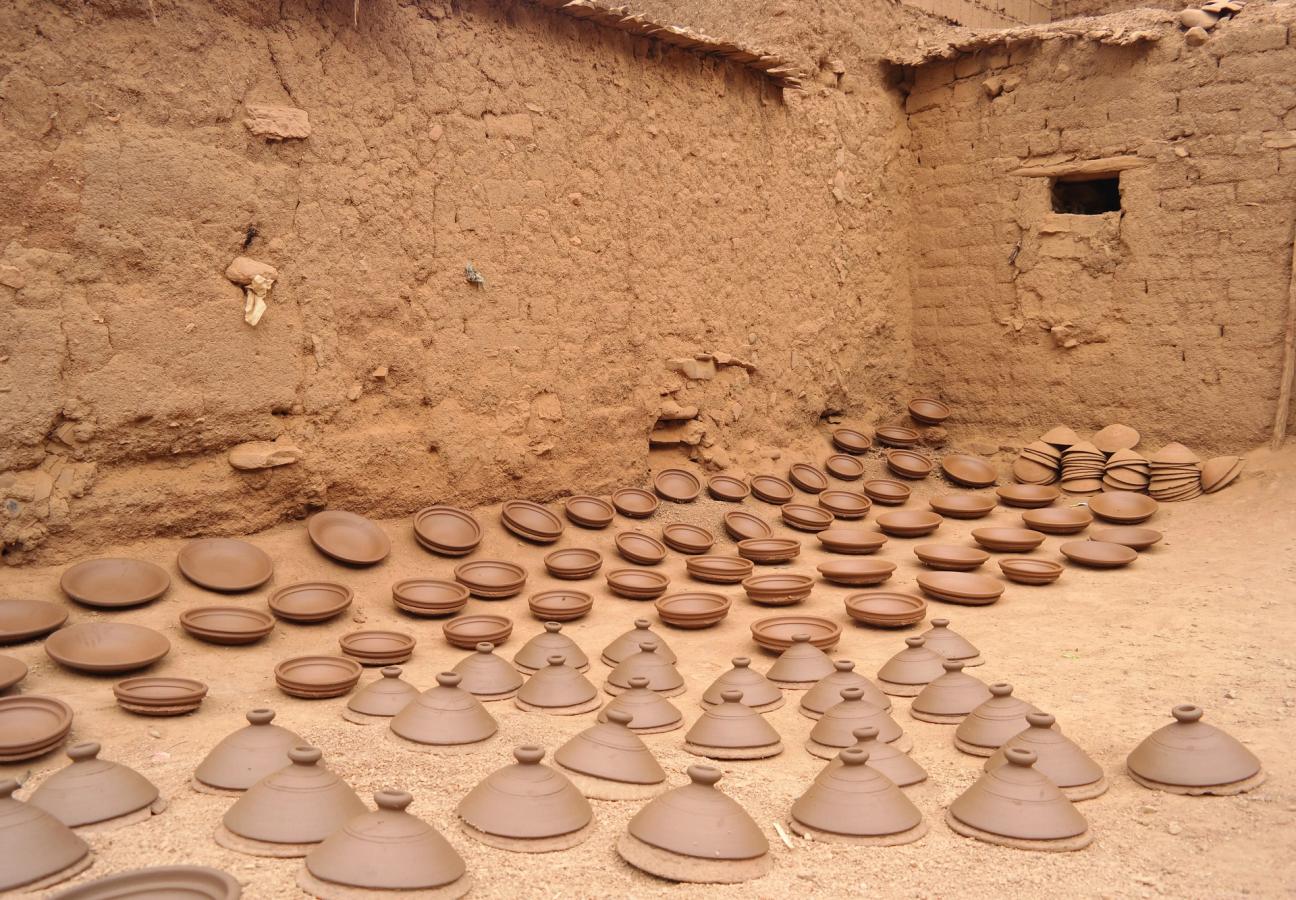
At Fatima’s, tagine is also on the menu. Tea poured, I offer to bring in the meal that’s been simmering gently over hot coals all day. Crossing the central courtyard of the house, where herbs grow from cracks that craze the earthen floor, I find the tagine in a room shared by a commendably restrained donkey. I’m wary of the beast, nonetheless, as the mule I drove up the mountain to reach the village has, for me, made asses out of donkeys forever.
The previous day, Lasu the mule, with his dolefully long ears and colourful patchwork saddle, had nudged me; a particularly asinine move considering where we stood — on one of the precipitous paths that snake along the side of the High Atlas. Health and safety, it seems, are words with no place in the Berber dictionary — another sign this rocky hinterland is far from the cosseted world of luxury travel.
My brush with death notwithstanding, the journey to Fatima’s village was fascinating. Accompanied by a local guide called Abdul, I traversed craggy gorges, rough tufts of greenery and thick spines of gorse. As we went, Abdul, in exquisite English, talked about the recent influx of ‘reality tourists’, and how the lure of nature is drawing travellers away from the souks of the city and into the mountains.
“We are running more and more tours,” Abdul revealed, discussing his partnership with high-end holiday brand Audley Travel. “Many more people now want to experience the Berber way of life, so we take them through the mountains, camping in patterned caidal tents, on trips between two and seven days.
“They see the nature where we Berbers live. These are walnut trees,” he added, patting a trunk, “these are apricot trees. And we have animals — wolves, jackals and wildcats, but also Atlas gazelles and mountain goats. There is a lot to see.”
Abdul was right. As we crested the ridge and the Atlas fell open in front of me, I could see all the gullies and valleys of this remarkable mountain range. I heard the faraway braying of distant donkeys and saw small flycatchers — Moussier’s redstarts — flit through the juniper trees. I opened my lungs to the fresh, crisp air.
Sheep grazed in the lower fields, snow highlighted Toubkal — the highest peak — and the cloudless sky burned a brilliant blue. Abdul produced a bag of redskin peanuts and tiny aniseed pastries — welcome snacks split three ways between men and mule. Hiking makes for hungry work, and I yearned for another filling tagine.
One day later and my wish is about to be granted. As I carry the simmering tagine back to the family table, I become distracted by the craftsmanship of the pot. Substantially designed and delicately decorated, it was spun into creation by Fatima’s son, Hassan. As the village potter for more than two decades, Hassan’s signature earthenware pots line the dirt streets, drying out in the sun before being further baked in a kiln.
Earlier, he had taken me to his workshop, where eucalyptus and string were bound together to form an ingenious potter’s wheel. Using water and sifted earth, Hassan had made two or three pots in a matter of minutes. The clay is incredibly versatile, he explained. Indeed, the whole village, standing for more than 700 years in the harsh Atlas environment, is literally raised from the earth — the burnt orange clay walls buttressed into being by large stones and lengths of poplar.
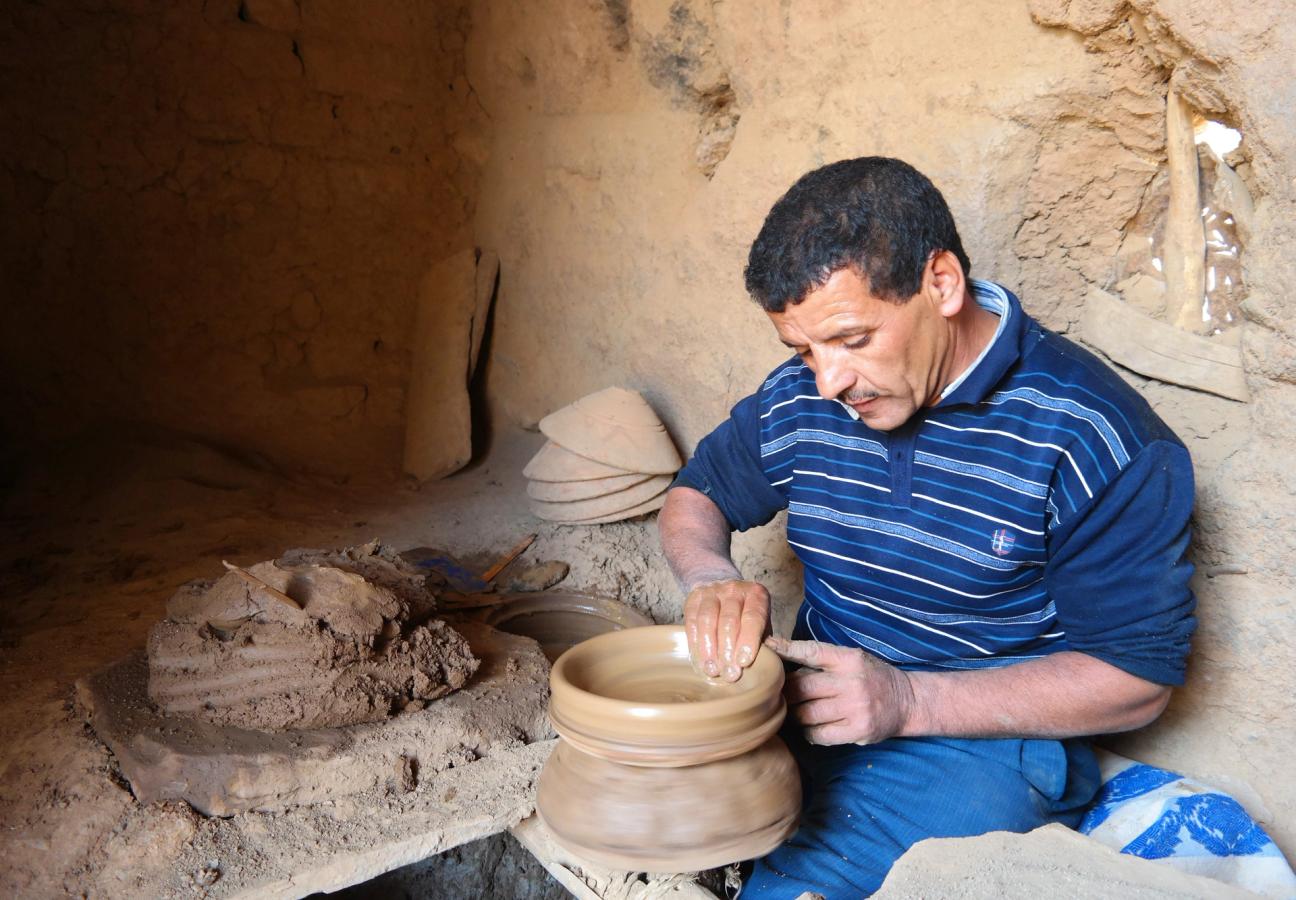
As Hassan added the final decorative touches to his tagine with a homemade tool, he explained, in Berber, how the earth can differ depending on where it is sourced. It is so natural, he noted, that you never quite know what you’re going to get. “Like playing the pottery lottery,” I quipped on linguistically deaf ears.
Hassan then took me on a tour of the village, from the local mosque to the arterial shingle trails that connect it to other remote settlements. A man in a wide-brimmed straw hat, sitting sideways on a horse, passed by, and a flurry of cockerels avalanched down a hill. Beehives buzzed and shepherds scrambled on the slopes — as nimble and knock-kneed as the goats they were tending.
Hassan gestured towards the small outhouses dotted about the village, and explained that they were the individual steam rooms, or hammams, of families. “Fammams?” I offered, careening once again into the language barrier.
But, what the potter lacked in language, he made up for tenfold in his craft. As I return to the table and set down the tagine — a meal of turmeric chicken, paprika, potato and preserved lemon — Hassan taps first its lid and then his chest, indicating that it is one of his creations. These are a people of simple prides and pleasures. Earlier, as I’d helped Fatima bake the bread we’re now dipping into the communal dish, she clapped her hands with glee and grinned every time the flat loaves let out a hiss of steam. It’s something she sees every day — yet it still puts a smile on her face.
Such smiles suggest that, in Morocco at least, the new travel trend is not as morally questionable as some may think. There is always a footprint left by this sprawling industry — whether cultural, environmental or ethical. Tourists may earn more than the Berbers, and benefit from far greater material comfort. But the obvious contentment of these people has much to teach us. They have an enviable ability to rhapsodise about the most basic of pleasures — such as the meal we’re coming to the end of.
From semolina soup to pomegranate couscous, the family begin reciting their recipe book for me, with broad grins all around. It’s a refreshing atmosphere, to be surrounded by those who still appreciate the simpler things, and as good a use of your travels, time and money as I can think of.
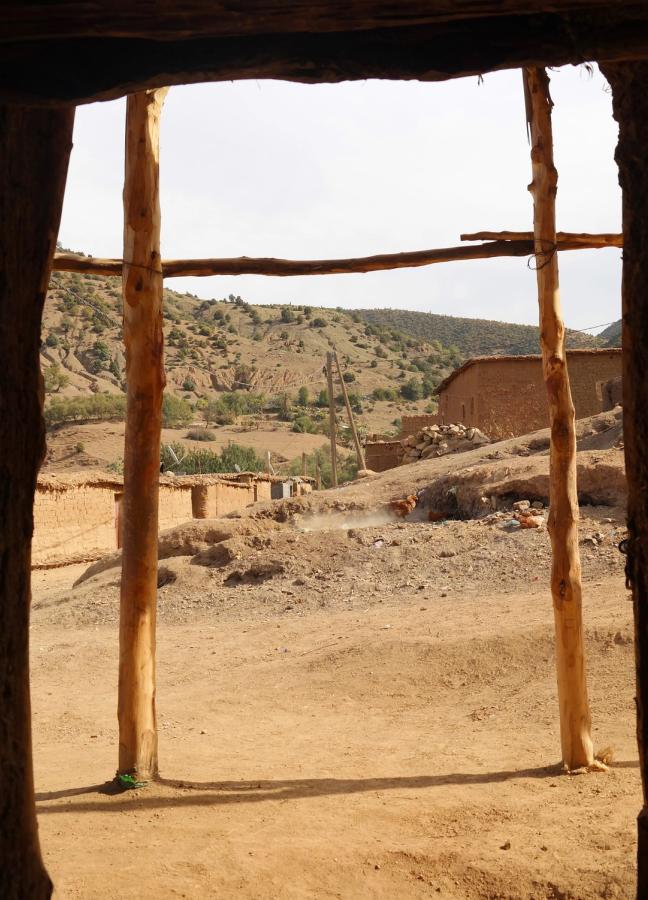
The diversity of Morocco — a land where new money resides in crumbling buildings, languages collide and the extremes of the Atlas Mountains stretch from ski runs to sand dunes — has shown me that our most memorable experiences do indeed come from contrast.
You must return in summer, the family tell me, when the weather is warmer and the village roasts meat in the street for a traditional Berber barbecue.
I almost say “berbercue”, but manage to hold my tongue.
This article was taken from the Jan/Feb 2018 issue of Gentleman’s Journal. Subscribe here…


